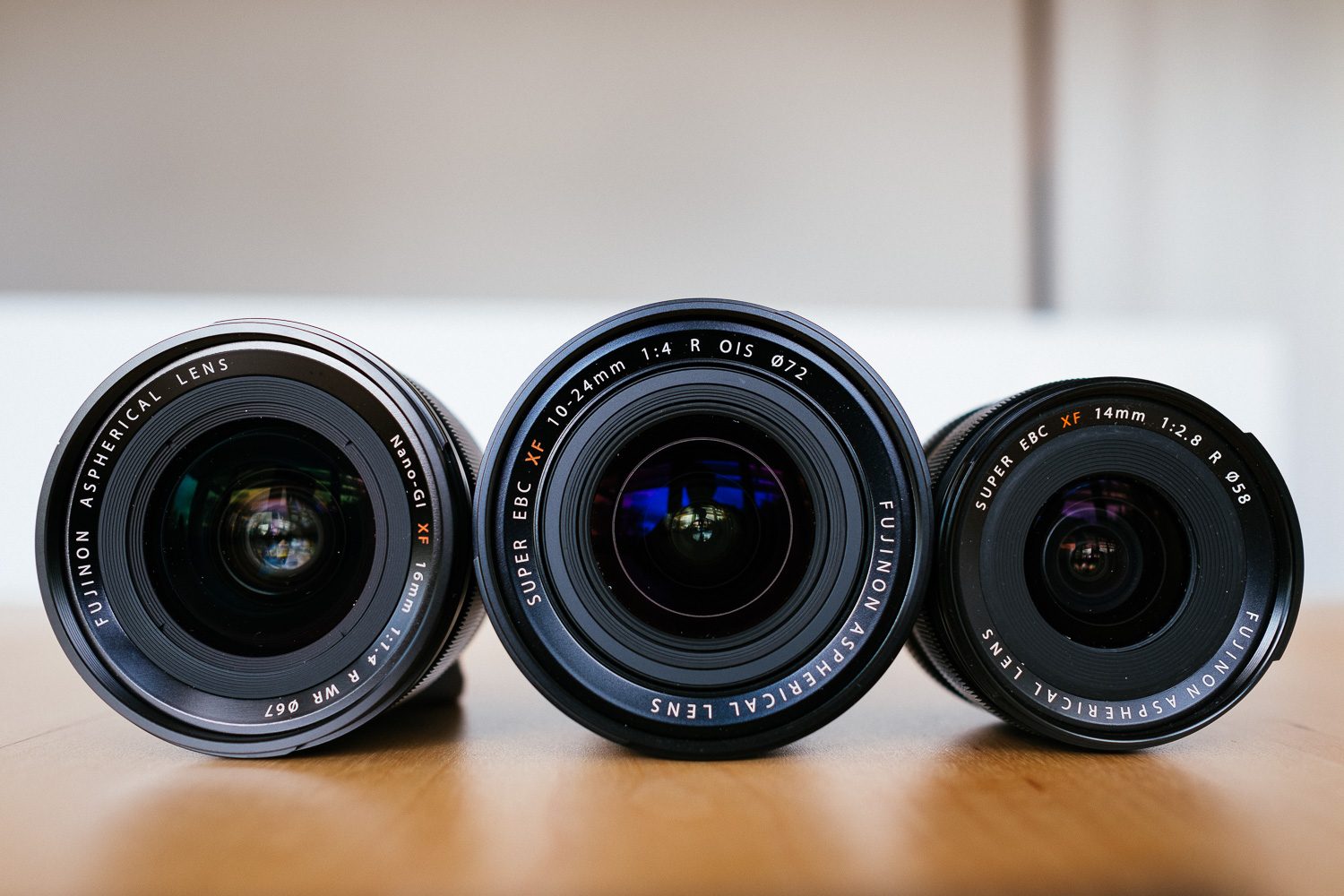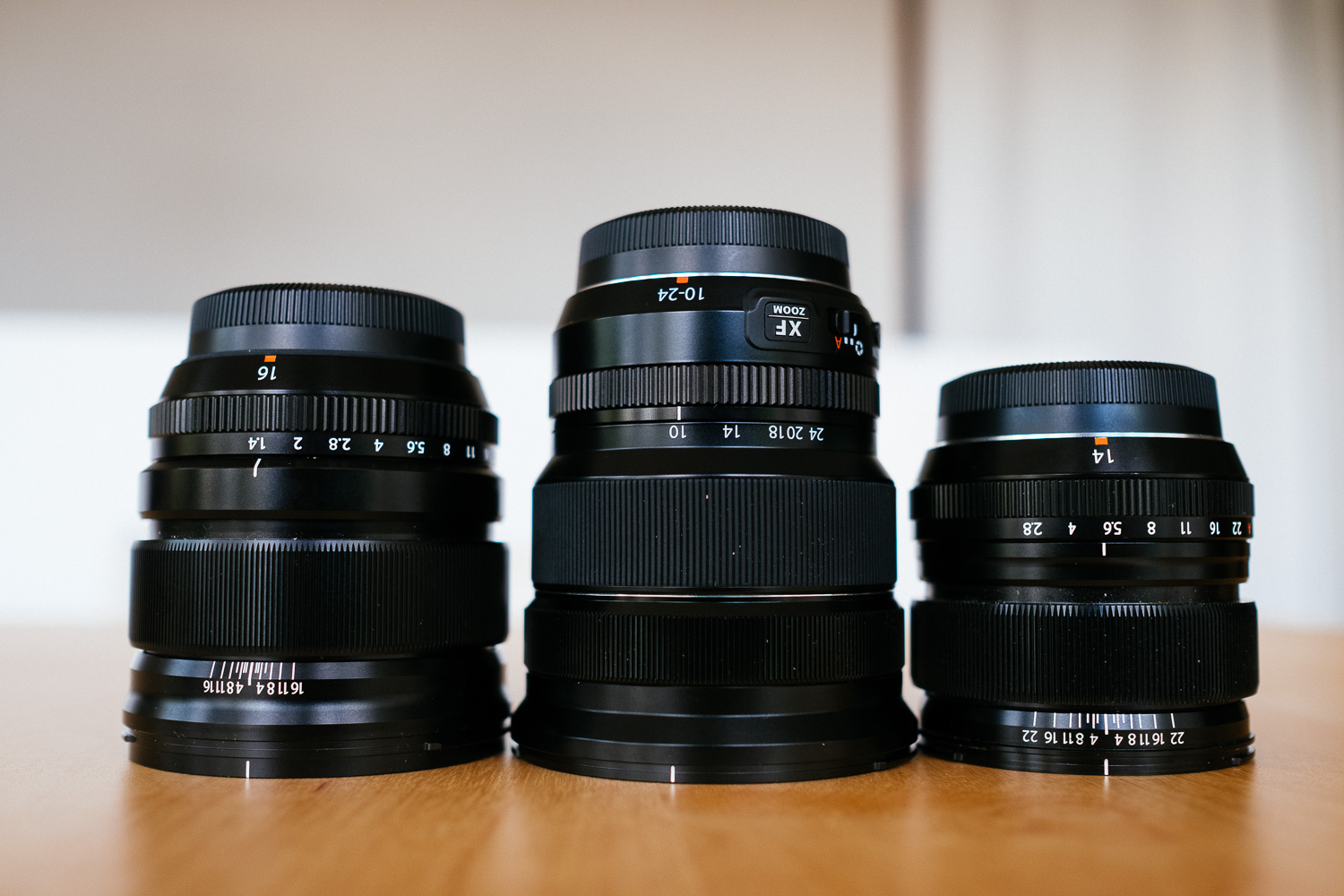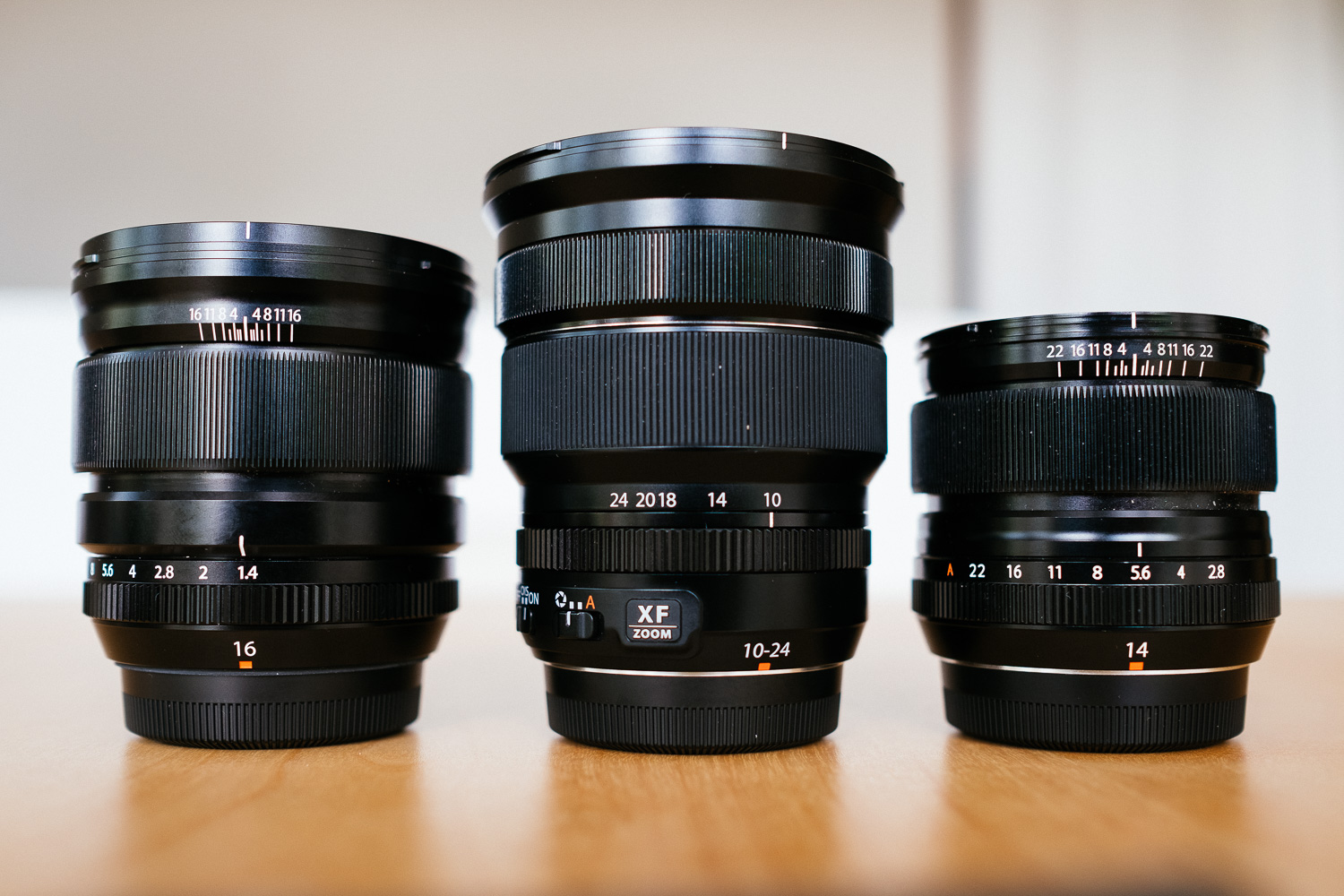 FUJIFILM X-Pro2 (23mm, f/2.8, 1/30 sec, ISO320)
FUJIFILM X-Pro2 (23mm, f/2.8, 1/30 sec, ISO320)
In most camera systems you would be happy to have one excellent wide angle lens available but Fuji gives us three. Now you have a luxurious problem: Which one should you get?
I own all three of them and shot them extensively so I think I can try to answer that question. Of course all three are very different lenses. One is a zoom lens, one is compact super wide angle and one is a super bright wide angle lens. What all three have in common is to give you a much wider view than the kit lens. As good as the kit lens is the 18mm (27mm in FF terms) simply isn’t wide enough and that’s why for most people to get a wide angle lens to complement the kit lens might be even more important than to get a tele zoom.
 FUJIFILM X-T1 (23mm, f/2.8, 1/30 sec, ISO250)
FUJIFILM X-T1 (23mm, f/2.8, 1/30 sec, ISO250)
1. Size/weight and mechanical quality
Let’s start with the physical properties and the built quality. The only lens of the three that could be considered small and light is the XF 14mm. The XF 10-24mm and the XF 16mm are both a little on the bulky and heavy side. Not compared to the average DSLR lens but compared to the kit lens or to Fuji’s 35mm lenses. This can be significant so I recommend to go to a good camera store for a hands on experience. Since I changed to mirror less to have a small alternative to my DSLR the clear winner here is the Fuji XF 14/2.8 R.
The built quality of Fuji lenses is very nice in general but of course there are differences. It seems that Fuji needed some attempts to get the aperture ring right. This thing is too lose on many lenses but on the 14mm in particular. On the 10-24mm it is also rather on the lose side but even more strange is that even though it is a constant aperture zoom the aperture ring does not have aperture markings. It’s a rotating ring like on the kit zoom and I have no idea why. I’m also not so keen of the rubber they used on the 10-24mm. I prefer the metal rings on the primes. The lens that get’s everything right here is the 16mm. The aperture ring has just enough resistance and the focus clutch works perfectly well too. I recommend to get the rectangular metal lens shade which looks so much better and even more important fits better into small bags. And lets not forget the fact that it’s weather sealed. The clear winner: Fuji XF 16/1.4 R WR.
 FUJIFILM X-Pro2 (23mm, f/2.8, 1/30 sec, ISO320)
FUJIFILM X-Pro2 (23mm, f/2.8, 1/30 sec, ISO320)
2. Optical performance
Of course this is unfair comparison. Primes should not be compared to zooms. It’s much easier to make a good prime lens because it is optimized for one focal length and thats why the design can be much simpler. Primes usually are sharper and have low to zero distortion. There are less lens elements and as a consequence they are also less prone to flare.
The XF 10-24 is a very good wide angle zoom. I think it is almost on par with the excellent Canon EF 16-35/4 IS. The first excellent wide angle zoom from Canon. It performs really good but of course it is still the weakest lens in this group by quite some margin. But if you want to have 10mm or the convenience of a wide angle zoom there is no other option. I love this lens for landscape shots and used it a lot during my last vacation in the USA.
For pure optical performance it is a very close call in between the 14mm and the 16mm. Too close to base your decision on lens performance but the 16mm has the by far better close focus distance and is 2 stops brighter. The 14mm is much wider which helps a lot in tight places, for landscapes and of course for architecture and interiors. It is close but for pure optical performance I give a slight edge to the 16mm (though the 14mm has the sharper corners) especially for its creamy Bokeh which is rather unusual for such a wide lens. The winner by a very small margin: the Fuji XF 16/1.4 R WR. One of the finest lenses in the Fuji system.
 FUJIFILM X-Pro2 (23mm, f/2.8, 1/30 sec, ISO320)
FUJIFILM X-Pro2 (23mm, f/2.8, 1/30 sec, ISO320)
3. Usefulness
Of course it looks rather obvious. A zooms seems to be more useful most of the time because of its flexibility. Many lenses in one. A super fast lens is good for low light and a wide prime with low distortion is good for architecture.
But it is not as straightforward as it seems. When it comes to versatility the 16mm is a good match for the 10-24 and here is why:
- speed: With speed I mean that the 16/1.4 is one of the fastest lenses available regarding aperture. This wide aperture helps to create some shallow DOF (depth of field) effect which is quite unusual for such a short focal length. But because it is so unusual it can create images you can’t take with the 10-24 or with any other zoom. A wide angle plus soft out of focus background still is fresh and unique.
- very close focus distance: With the 16mm you can get really close to your subject. Think about food photography. It seems that everybody likes to take a picture of what he eats. Especially in Asia. Of course 99% will use their smartphones but with the 16/1.4 you can create a professional look because of the shallow DOF.
- Both features combined makes the 16/1.4 one of the best lenses for social photography. A picture of your friends in low light in front of nice bar will look amazing.
- And of course the most obvious advantage at the end. F1.4 allows you to shoot at ISO 3.200 instead of ISO 25.600@f4 or ISO 800 instead of ISO 6.400 to use some more realistic values. But no matter the great high ISO performance of todays cameras you can’t compensate 3 stops.
Of course the 10-24/4 is a very versatile lens because it goes from 10 to 24mm and it’s the only lens that offers optical image stabilization. But OIS is overrated and especially on a wide angle lens one must not expect too much.
The 14mm looks like the clear loser here because it is neither fast nor has it a short minimum focus distance nor can you change the focal length. But it is irreplaceable if you want to go wide without the need to deal with excessive distortion. The 10-24 is fine but I found that I end up using it at 14mm a lot because this seems the best compromise in-between wide and distortion.
It’s not possible to pick a winner here but for me personally the XF 16/1.4 R WR is just not wide enough to replace my XF 14/2.8 R and the XF 10-24/4 R OIS is not as flexible as it seems because its OIS is of limited use. If you own the 18-55 the 14mm might be all you ever need and your kit would be still small and light.
 FUJIFILM X-Pro2 (23mm, f/2.8, 1/30 sec, ISO400)
FUJIFILM X-Pro2 (23mm, f/2.8, 1/30 sec, ISO400)
Conclusion:
Three great lenses which makes it hard to pick a winner. I think it simply comes down to what you want.
If you want to keep the camera as small and light as possible the Fuji XF 14/2.8 R is the only option here. The other two are substantially bigger and almost two times the weight. The 14mm is also THE lens for reportage photography and it’s great for architecture too. It makes a nice combo with the kit lens and even shares its lens hood.
The Fuji XF 16/1.4 R WR is the star here because of its fast aperture, its close minimum focus distance and its superb built quality. A surprisingly versatile lens that is hard to beat in low light and close distance. A little heavy for my taste but I love to have that f1.4 and that’s the price to pay to have it. The fast aperture gives you a nicely blurred background and the Bokeh looks good too.
The Fuji XF 10-24/4 R OIS is the only zoom here with the obvious advantage that it includes a 10mm, 12mm, 14mm, 16mm, 18mm, 23mm lens and all the focal lengths in between. It is also the only lens here with image stabilization but on such wide lenses IS is not really necessary. It is a great lens for landscape photography but not so hot in low light.
So the overall winner is? Luckily I don’t have to decide.
